In the Caribbean, the status of reef fish stocks has been declining due to an increase in the human population and demand of food sources. The number of inhabitants in the islands started to rise especially in the 17th century, after the establishment of the modern plantation system and subsequent trade of inland products, which increased the number of slaves brought to the islands and also attracted many sailors (1). Large numbers of turtles and manatees were harvested back then, as well as many reef fish species. Since the 19th century, it has been recognized that the fish stocks have been reducing in number in the Caribbean. Proof of this is that, by the year 1881, Jamaica was importing 85% of their fish for human consumption, mainly due to overfishing in the island’s coastal areas, and also to the sediment runoff caused by the developing inland agriculture activities that degraded the marine habitats too (1).

Source: Florent Charpin/ReefGuide
According to the IUCN Red List report of the Conservation status of marine bony shorefishes of the Greater Caribbean (2), 5% of the species are threatened. The Red Snapper (Lutjanus campechanus) and the Atlantic Bluefin Tuna (Thunnus thynnus), considered Vulnerable and Endangered species, respectively, are still considered fishing targets. Within the Seaflower Biosphere Reserve, large-bodied species like the Nassau Grouper Epinephelus striatus, and other commercially important species, are already threatened by overfishing (3; 4). The overfishing of groupers, as well as of other predators like sharks, may have important implications raising or lowering the number of individuals of other species, due to the control they exert over many other groups down in the food web.
Another important group of currently overfished species are the parrotfishes, which have been overfished in the Caribbean for several decades. The blue parrotfish (Scarus coeruleus) is rarely observed in the Seaflower Biosphere Reserve, and the rainbow parrotfish (S. guacamaia) is considered absent (5). The importance of parrotfishes lies in their way of feeding, since these fishes graze the algae that compete with the corals for light; therefore, their absence in the Caribbean waters magnifies the threats that coral reefs are facing.

Source: Simply Local
But the consequences of overfishing are not evident only in groups of fish. Other animals, mainly the Caribbean Spiny Lobsters (Panulirus argus) and Queen Conch (Lobatus gigas), have suffered important reductions in abundance (6; 7). As a response to the constant pressure of being captured prior to reach their maturity, the mean age of these groups has diminished over time (7). Both species have been captured in the Caribbean for centuries. Today, the Queen Conch is included in the Appendix II of CITES, which regulates the trade of the species internationally. However, harvesting regulations are scarce and highly variable within each of the countries included in its distribution range, where they are highly valuable for meat, medicine and as a souvenir.

Source: Claire Shefchik/Atlas Obscura
Within the Seaflower Biosphere Reserve, only the “raizales” –creoles in San Andrés archipelago– are, by law, allowed to fish. However, since enforcement is weak illegal fleets from countries like Jamaica, Nicaragua, and Honduras commonly fish in the area (4). Therefore, integrated decisions that help to reduce the fishing pressure and encourage the use of better, more selective fishing gear its extremely important, both for the conservation of species and to ensure food sources for the future.
References
1) Jackson, E. J., Donovan, M., Cramer, K., & Lam, V. (Eds.). (2014). Status and Trends of Caribbean Coral Reefs: 1970-2012. Gland, Switzerland: Global Coral Reef Monitoring Network, IUCN.
2) Linardich, C., Ralph, G., Carpenter, K., Cox, N., Robertson, D. R., Harwell, H., … Williams, J. T. (2017). The Conservation Status of Marine Bony Shorefishes of the Greater Caribbean. Gland, Switzerland: IUCN.
3) Chasqui, V. L., Polanco, F. A., Acero, P. A., Mejía-Falla, P. A., Navia, A. F., Zapata, L. A., et al. (Eds.). (2017). Libro rojo de peces marinos de Colombia. Serie Publicaciones Generales Invemar 93. Santa Marta, Colombia: Instituto de Investigaciones marinas y Costeras INVEMAR, Ministerio de Ambiente y Desarrollo Sostenible.
4) Acero, P., Tavera, J. J., Polanco, F. A., & Bolaños-Cubillos, N. (2019). Fish Biodiversity in Three Northern Islands of the Seaflower Biosphere Reserve (Colombian Caribbean). Frontiers in Marine Science, 6, 113.
5) Acero, P., & Polanco, F. A. (2017). Biodiversidad íctica de los mares colombianos: riqueza amenazada. Revista de la Academia Colombiana de Ciencias Exactas, Físicas y Naturales, 41, 200-212.
6) Alzugaray, R., Puga, R., María, R. P., De León, E., Cobas, S., Morales, O., … González-Díaz, P. (2018). The Caribbean spiny lobster (Panulirus argus) fishery in Cuba: current status, illegal fishing, and environmental variability. Bulletin of Marine Science, 94(2), 393–408. https://doi.org/10.5343/bms.2016.1126
7) Stoner, A. W., Davis, M. H., & Kough, A. S. (2019). Relationships between Fishing Pressure and Stock Structure in Queen Conch (Lobatus gigas) Populations: Synthesis of Long-Term Surveys and Evidence for Overfishing in The Bahamas. Reviews in Fisheries Science & Aquaculture, 27(1), 51–71. https://doi.org/10.1080/23308249.2018.1480008


